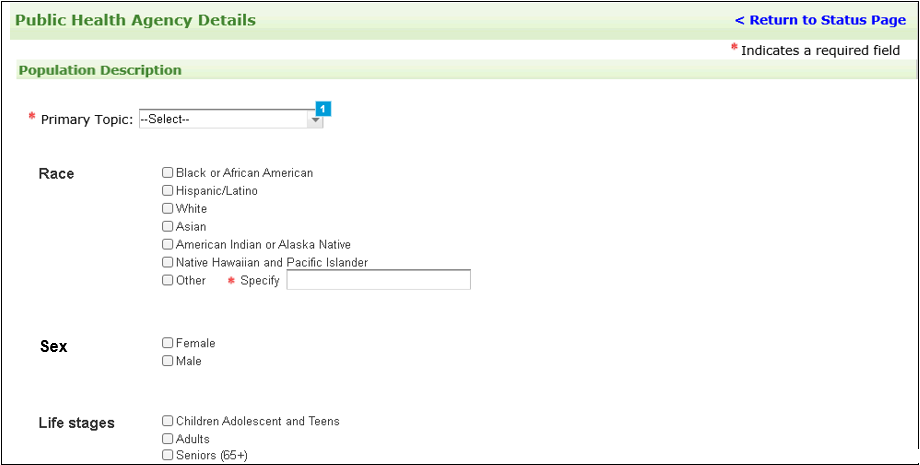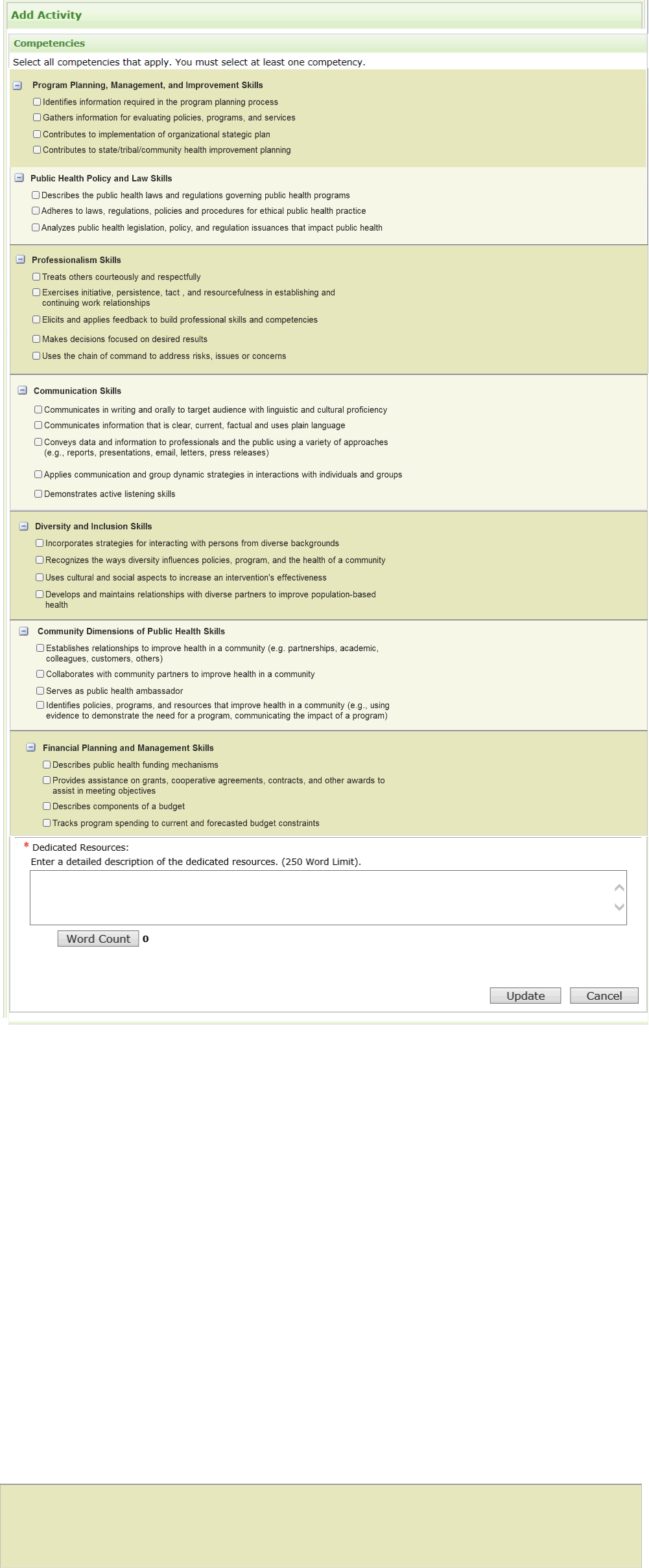FMS Host Site Module
Fellowship Management System
Final-OMB Control Number 0920-0765 FMS PHAP Host Site Module 01OCT2015
2014 FMS Host Site Module - PHAP Host Site Example
OMB: 0920-0765
Attachment 2 OMB
Control Number 0920-0765 Non-substantive
Change Request |
PHAP Host Site Module |
|
|
|
Screen shots of modified questions |
Table of Contents
1 Public Health Agency Details: Contact Information 3
2 Public Health Agency Details: Population Description 4
3 Public Health Agency Details: Organizational Structure 5
4 Public Health Agency Statement 6
5 Assignment Details 7
6 Program Details 8
7 Appendix A 9
8 Appendix B 11
9 Appendix C 12
Primary Supervisor Information 12
10 Appendix D 13
Secondary Supervisor Information 13
11 Appendix E 14
Public Health Agency Details: Contact Information
Click the Primary link to display the primary supervisor entry screen shown in Appendix C.
Click the Secondary link to display the secondary supervisor entry screen shown in Appendix D.
Allow ability to upload letter or support form in the Director Contact section.
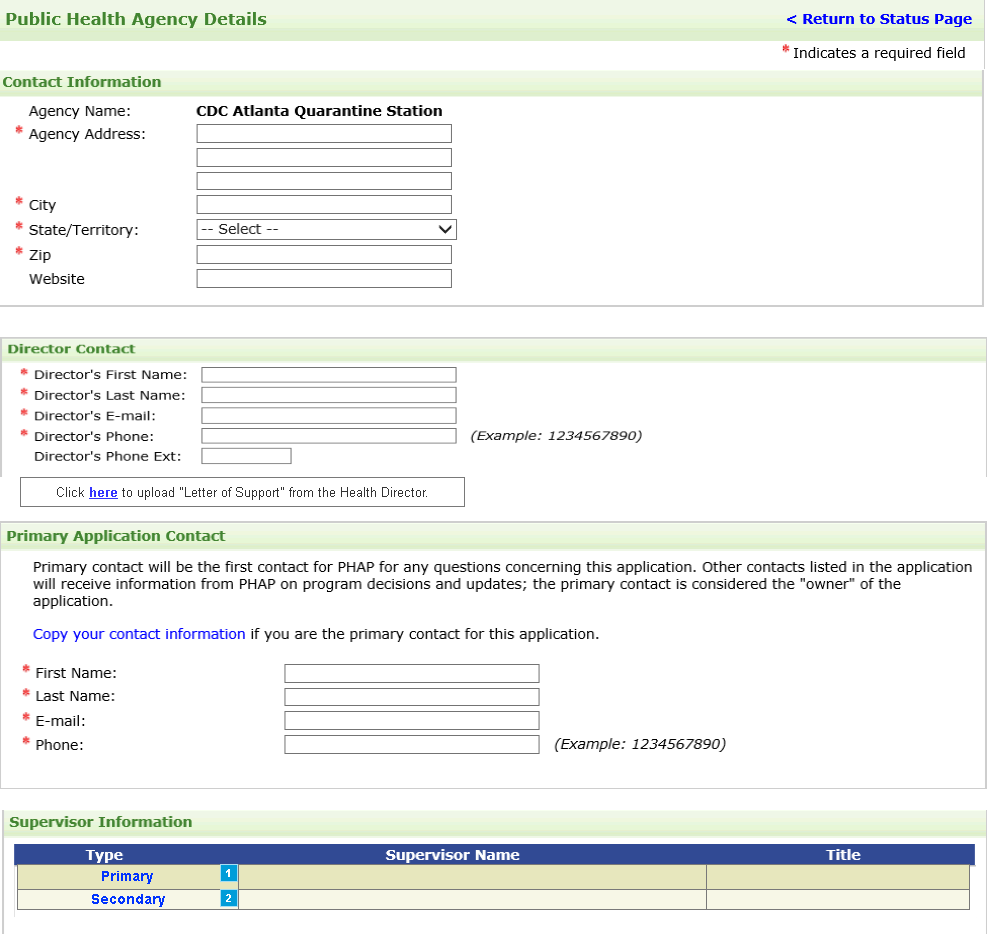
The Primary Topic field is a dropdown that will include “Other” – see Appendix F for dropdown list
Allow ability to select multiple categories for Race, Life Stages and Primary Topic
Public Health Agency Details: Organizational Structure
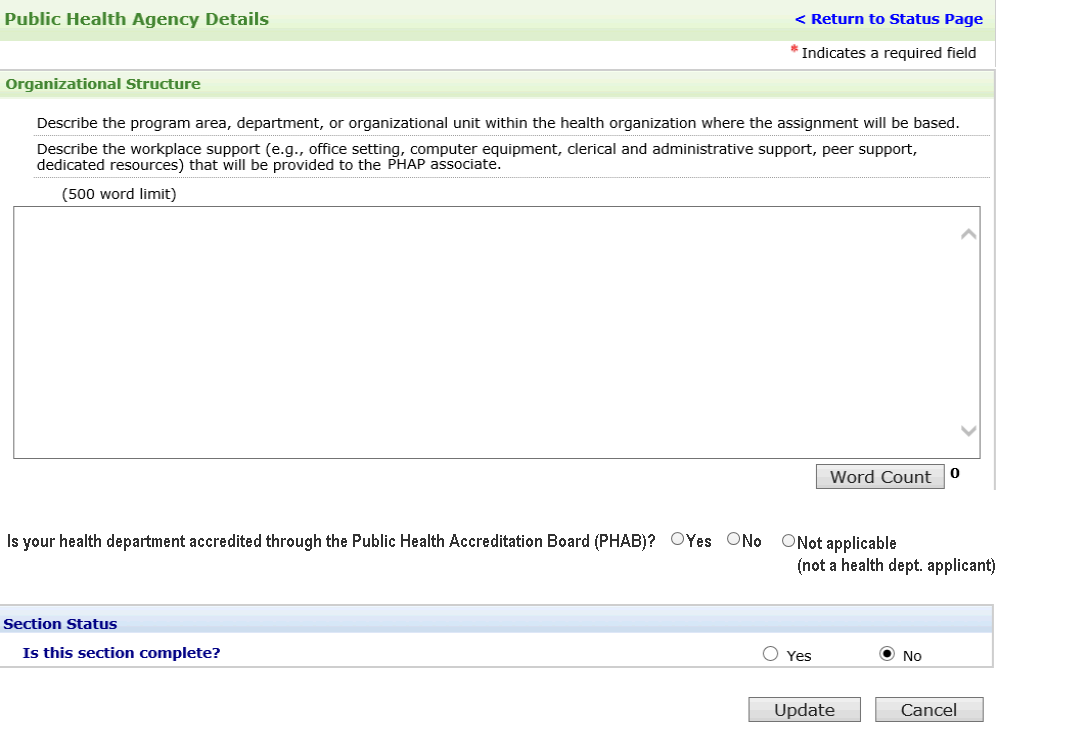
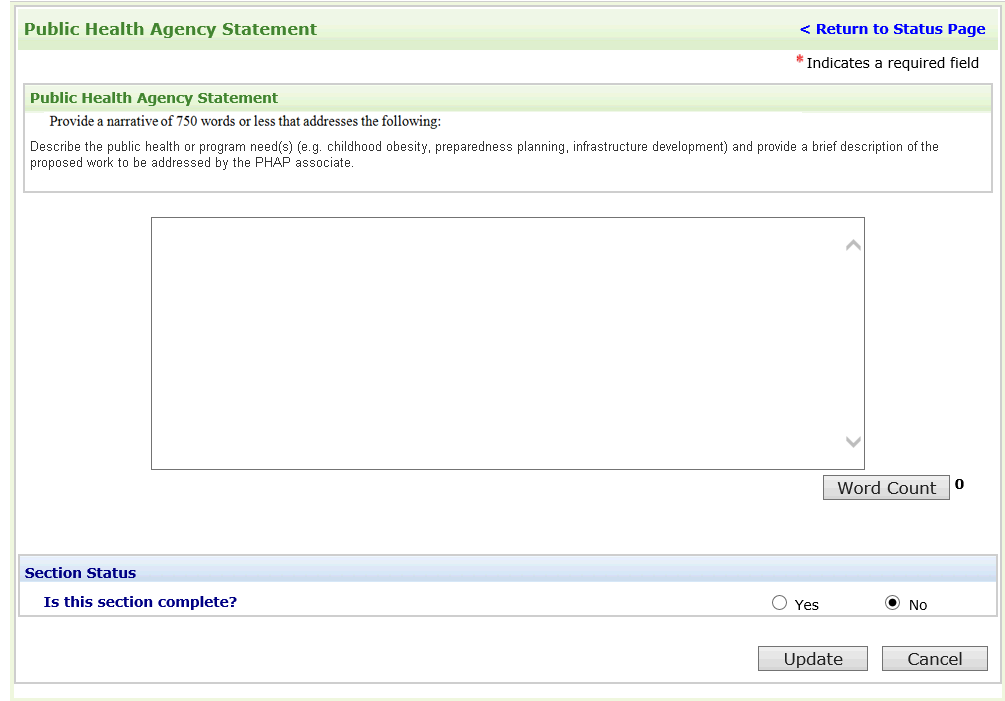
Added column in table to capture the Program Area
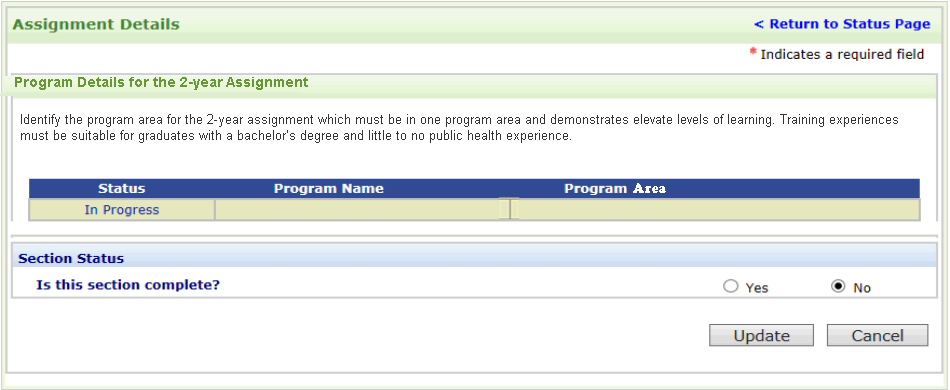
Click the Add Activity button to display the Add Activity screen shown in Appendix A.
Click the Add Training button to display the Add Training screen shown in Appendix B.
Click the Primary link to display the primary supervisor entry screen shown in Appendix C.
Click the Secondary link to display the secondary supervisor entry screen shown in Appendix D.
Program dropdown will be the list of CIO Categorical Program Areas shown in Appendix E.
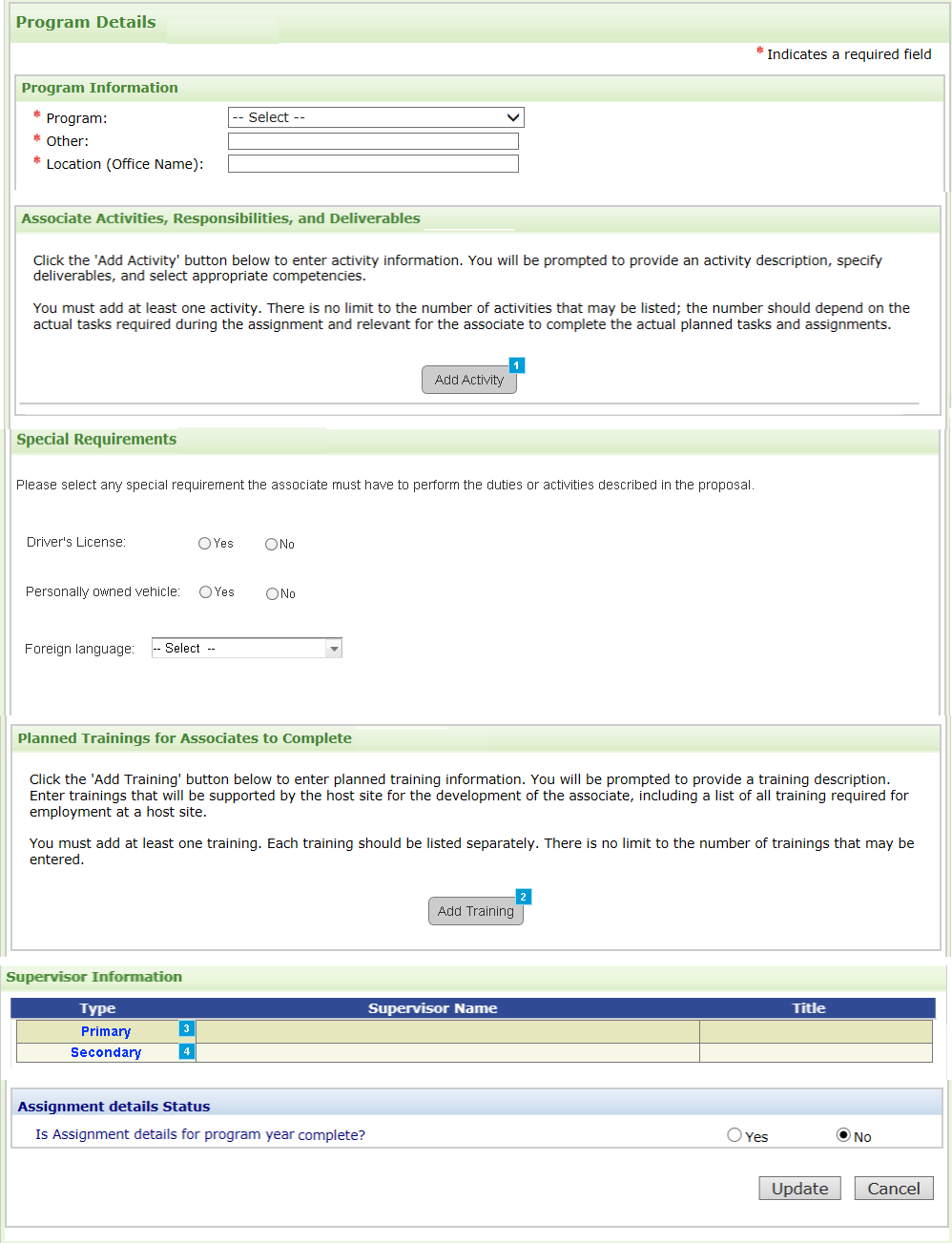
Add Activity
Level of Responsibility dropdown list will include: Team Member, Coordinator, Lead or Other (specify)
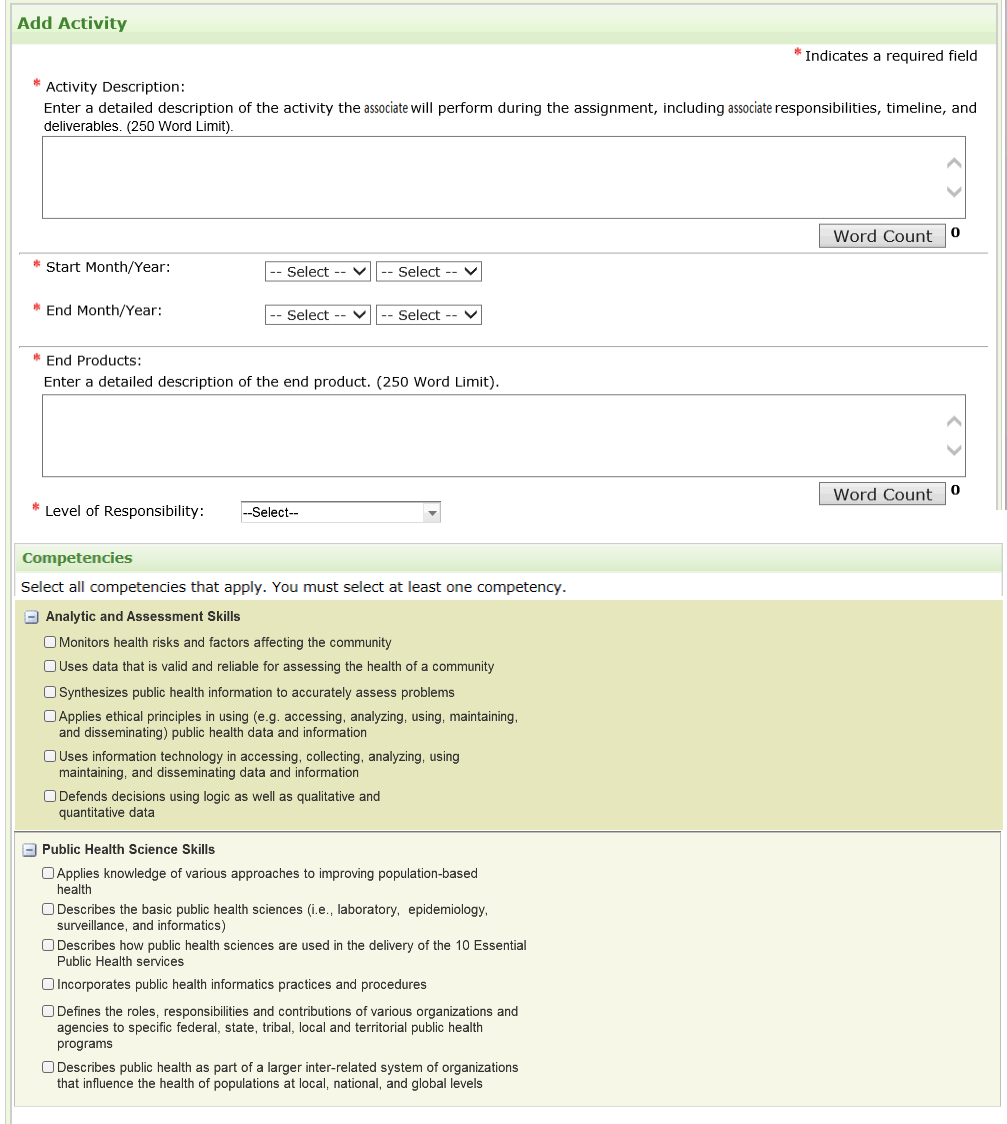
Add Training

Training Types
One-on-One
E-Learning Non-CDC
Classroom: HD
Classroom: Outside Sponsor
E-learning CDC
Primary Supervisor Information
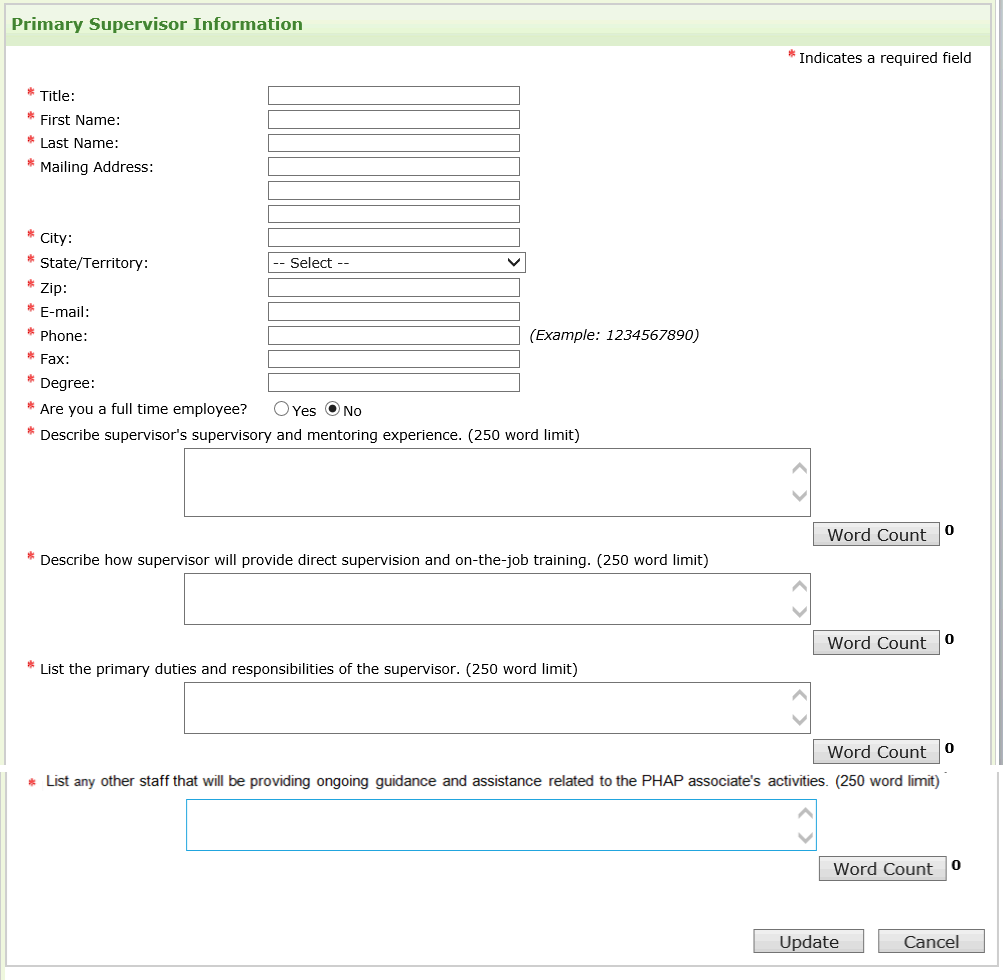
Secondary Supervisor Information
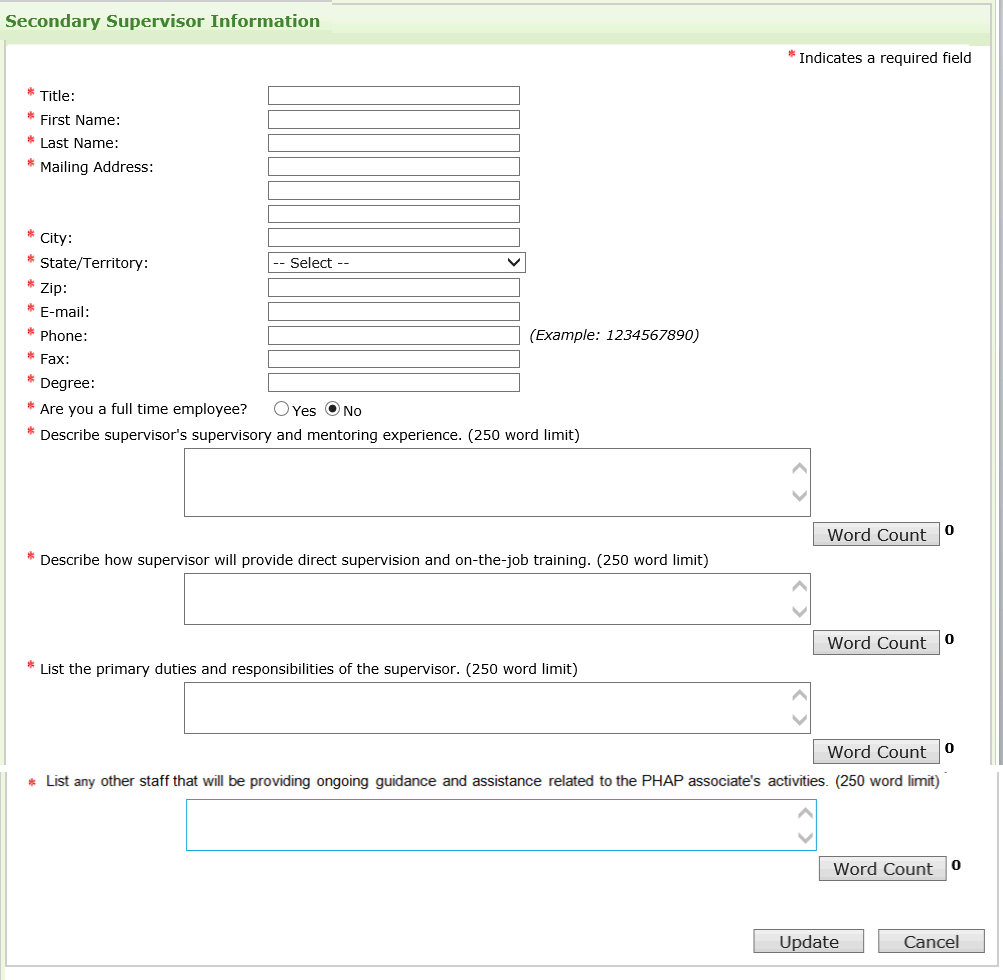
CIO Categorical Program Areas List (the CIO and division will not be visible to the host site but will link to CIO on admin page)
CIO |
Categorical Program Area(s) |
|
1. |
Center for Surveillance, Epidemiology, and Laboratory Services (CSELS) |
Division of Public Health Information Dissemination (DPHID Division of Laboratory Systems Division of Health Informatics and Surveillance
|
2. |
National Center for Birth Defects and Developmental Disabilities (NCBDDD) |
Division of Birth Defects and Developmental Disabilities
Division of Human Development and Disabilities
Division of Blood Disorders
|
3. |
National Center for Chronic Disease Prevention and Health Promotion (NCCDPHP) |
|
4. |
National Center for Emerging and Zoonotic Infectious Diseases (NCEZID) |
|
5. |
National Center for HIV/AIDS, STD, and TB Prevention (NCHHSTP) |
|
6. |
National Center for Immunizations and Respiratory Diseases (NCIRD) |
|
7. |
National Center for Injury Prevention and Control (NCIPC) |
|
8. |
National Center on Environmental Health (NCEH) |
|
9. |
National Institute for Occupational Safety and Health (NIOSH) |
|
10. |
Office for State, Tribal, Local and Territorial Support (OSTLTS) |
|
11. |
Office of Public Health Preparedness and Response (OPHPR) |
|
| File Type | application/vnd.openxmlformats-officedocument.wordprocessingml.document |
| File Title | PHAP Host Site Module |
| Author | [Your Name] |
| File Modified | 0000-00-00 |
| File Created | 2021-01-24 |
© 2026 OMB.report | Privacy Policy
